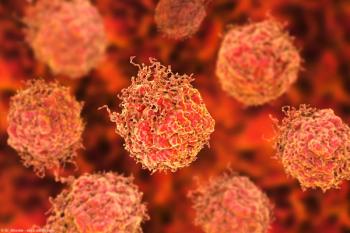
T pellets: What are you allowed to charge?
In this "Coding Q&A" column, Ray Painter, MD, and Mark Painter also answer a question about how to code for cystoscopy with stent removal through the stoma in a patient with an ileal loop.
I’m a urologist in a large multispecialty group that specializes in men’s health. I see a lot of men with hypogonadism and have a large number on implantable pellets. I recently received a letter from an insurance company requesting that I repay all the money I received for evaluation and management visits on the same day as the implant. Are they correct? Is it against the payment rules for me to evaluate the patient on the same day as the implantation?
No, it is not against the rules, in some scenarios. However, it would be against the rules in other scenarios. So, our answer would be “maybe,” or “depends.” We will try to delineate the rules and empower you to make an accurate decision as to whether to charge or not charge for each encounter.
Also by the Painters -
We will start with an assumption that your documentation qualifies for charging an E&M code with adequate documentation of the components or the amount of time spent during an encounter in which over 50% of the time was spent counseling or coordinating care.
The next question is, does the documentation show that the visit was medically necessary? In other words, was the service needed for good patient care? Then, last but not least, the documentation must justify the use of the –25 modifier. That means that this service has to be “separately identifiable” from the procedure; in this case, the implantation of the pellets. In other words, the service has to be more than getting the patient ready for the procedure, inquiring about their health and well-being, and determining whether the procedure should be performed on that patient that day.
Read:
You’ve already been paid for the preoperative preparation of the patient when you’re paid for the procedure. However, if you are evaluating the primary disease process and determining appropriate treatment and outlining additional diagnostic studies that are needed, you’re performing functions that are separately identifiable. In addition, we’ll restate the obvious: If you evaluate and/or treat another disease process in addition to hypogonadism, that service is “separately identifiable.”
The second criterion necessary to justify use of the –25 modifier is “significance.” That means if you review a lab test in passing and said, “Yes, we’re OK to go,” that’s not significant. The encounter would be “significant” if the medically necessary, separately identifiable service required additional time and effort. For example, if a patient was seen in the office, diagnosed with hypogonadism, and scheduled for the pellet implantation a few weeks later, it probably isn’t medically necessary to reevaluate the disease process on the day of implantation and therefore you should not charge an E&M code.
Also see -
However, if a patient is returning 3 to 4 months after the first injection and you review previously ordered lab work, obtain history to assess the patient’s clinical response, and spend time in medical decision-making to adjust the number of pellets to be given, you have clearly provided a medically necessary service that is separately identifiable from the procedure and was significant. The encounter should be charged with the –25 modifier.
My doc did a cystoscopy with stent removal through the stoma in a patient with an ileal loop. Should I code using an unlisted code, or should I use a regular cystoscopy? I have not come across this before.
Your question is very timely. In the past, some would’ve answered the question with, “You should use a small bowel endoscopy code.” However, CPT has clarified the rules in writing. We’ve now been given permission (empowered) to use the regular cystoscopy codes for all endoscopy procedures performed on replacement bladders. The change will make it much easier to report a number of the endoscopy procedures.
Therefore, you should report the procedure with 52310 (Cystourethroscopy, with removal of foreign body, calculus, or ureteral stent from urethra or bladder [separate procedure]; simple).
More from the Painters:
The information in this column is designed to be authoritative, and every effort has been made to ensure its accuracy at the time it was written. However, readers are encouraged to check with their individual carrier or private payers for updates and to confirm that this information conforms to their specific rules.
Newsletter
Stay current with the latest urology news and practice-changing insights — sign up now for the essential updates every urologist needs.


















